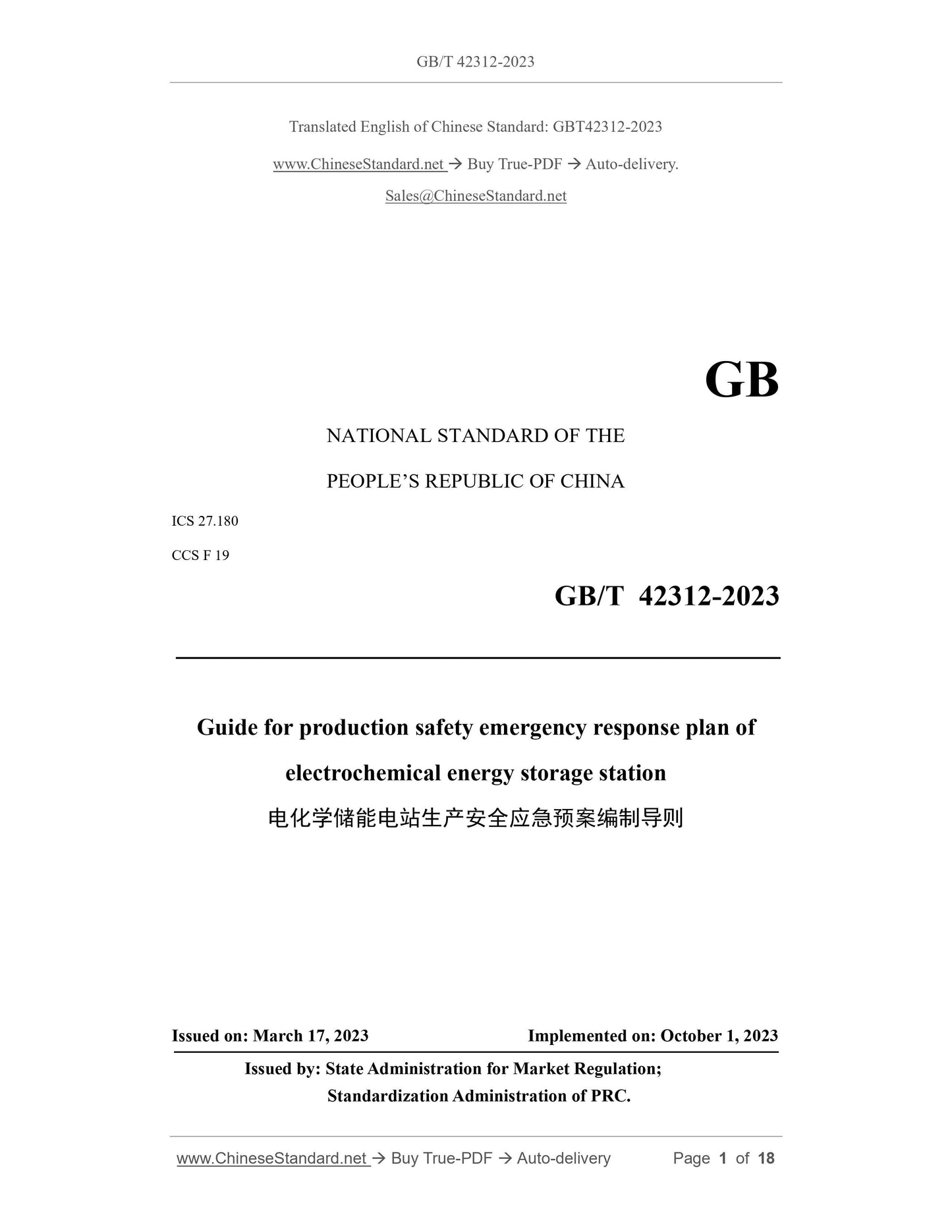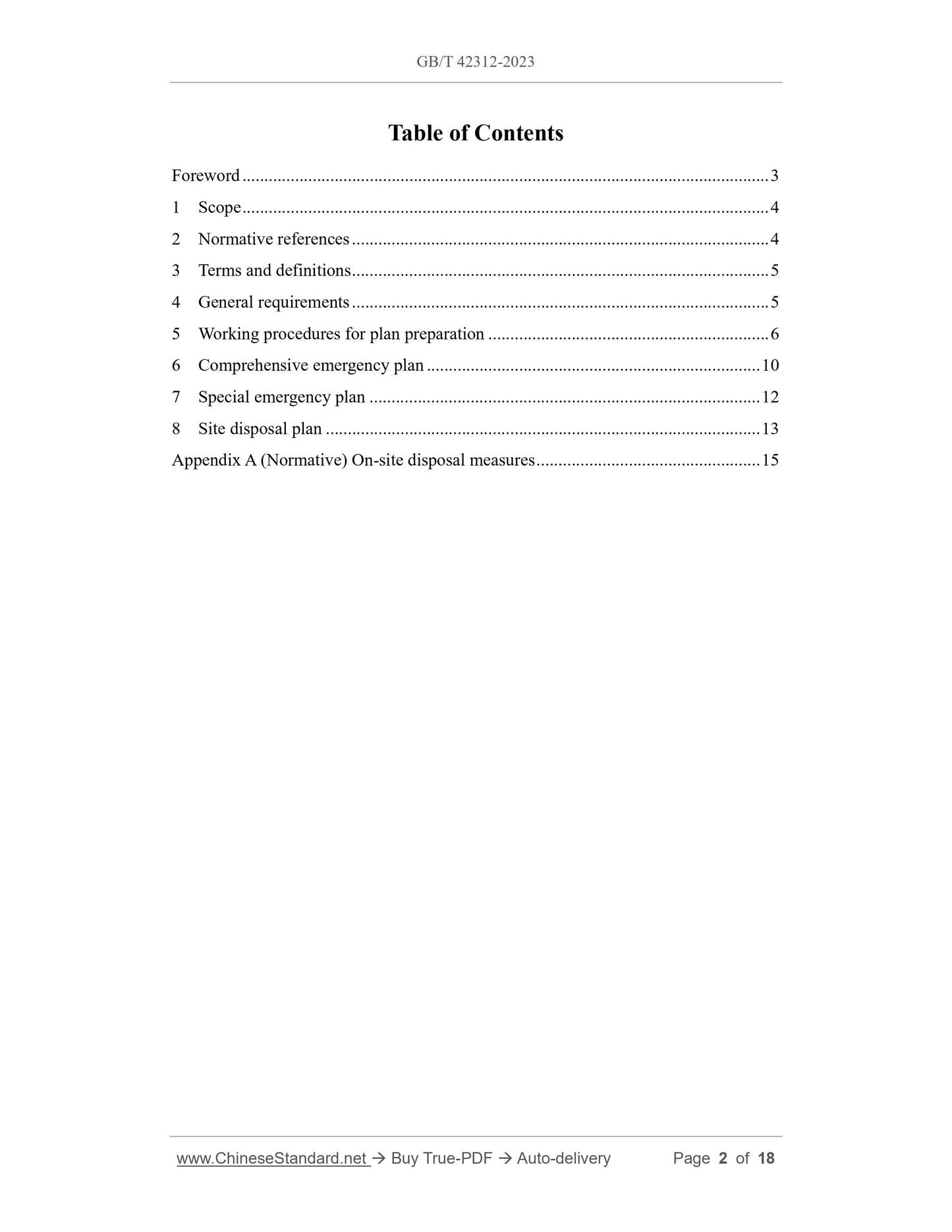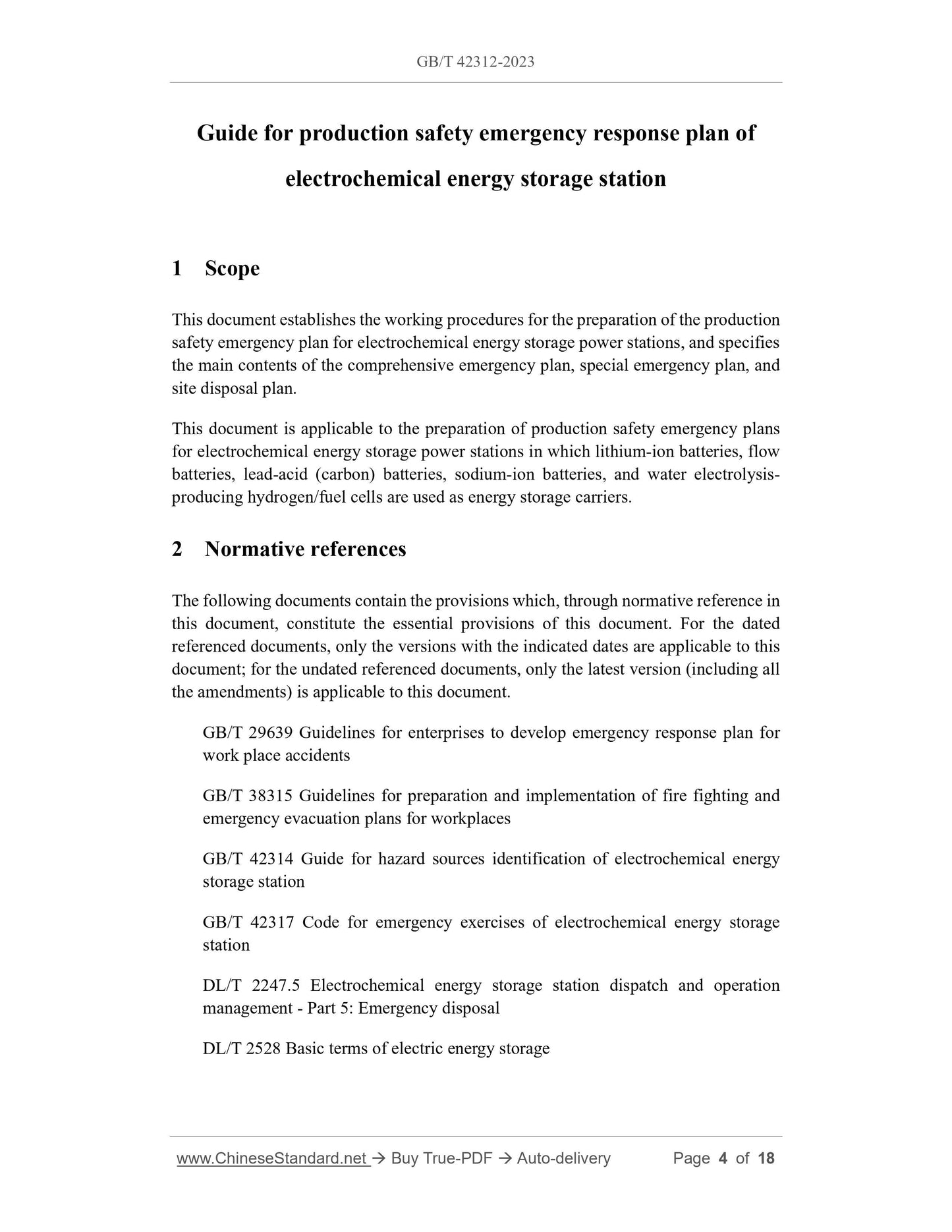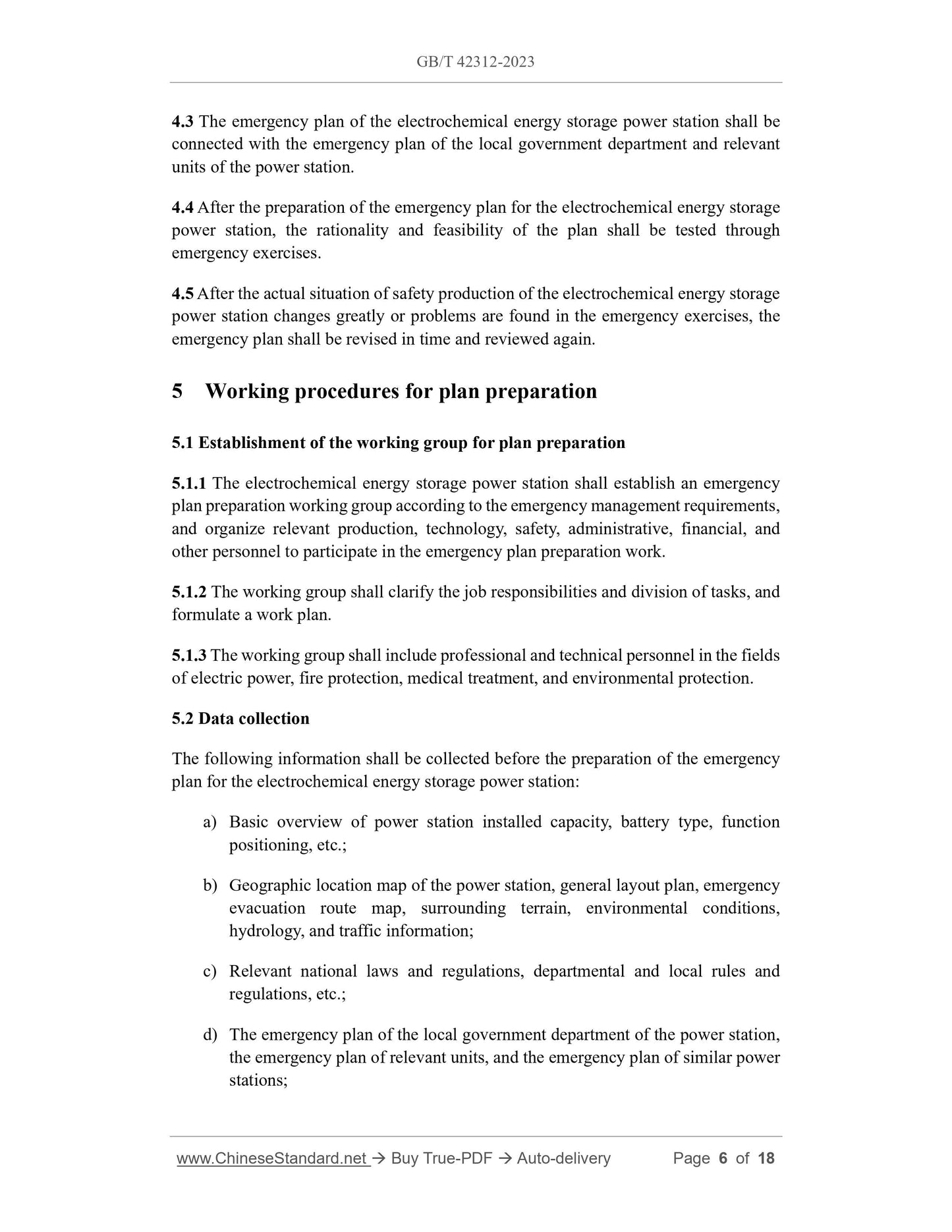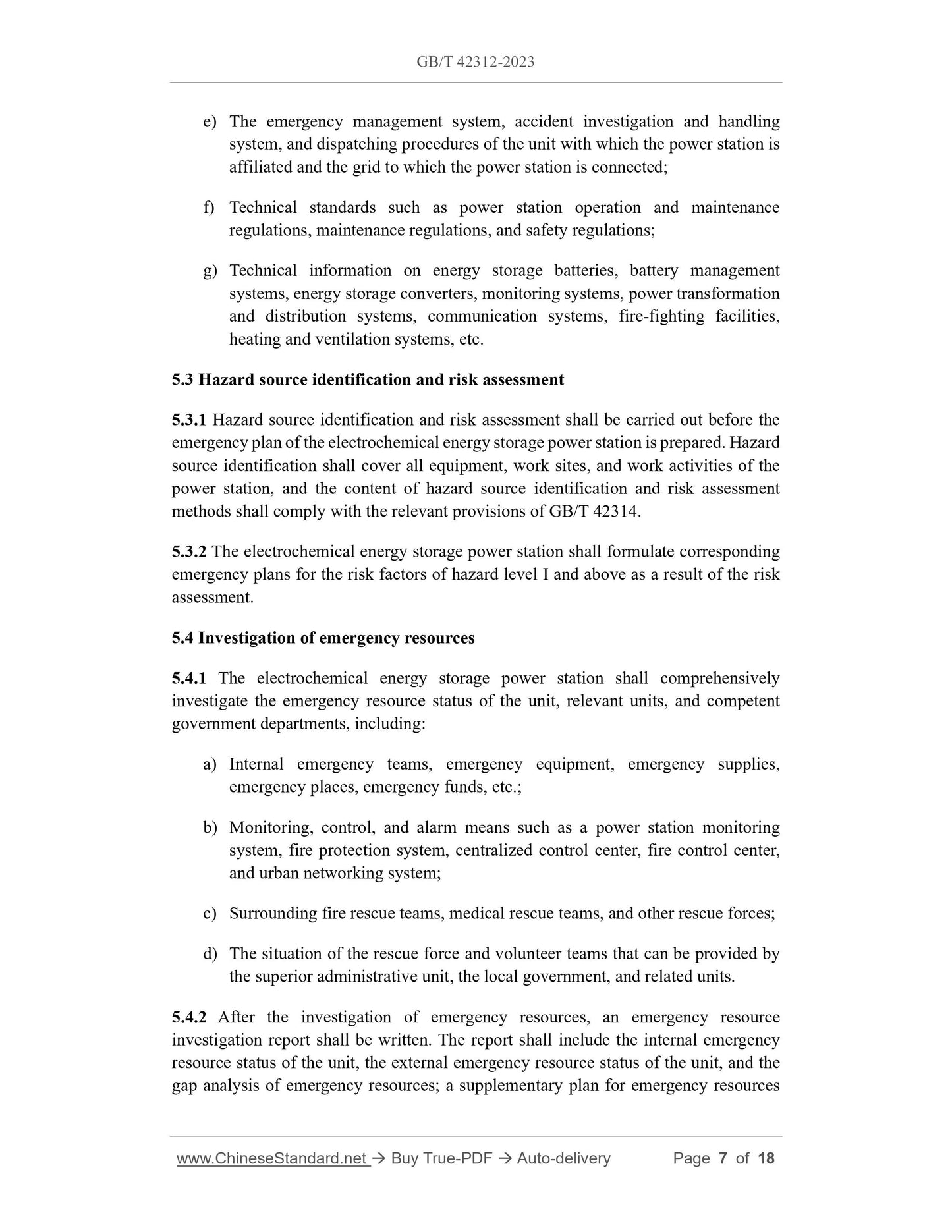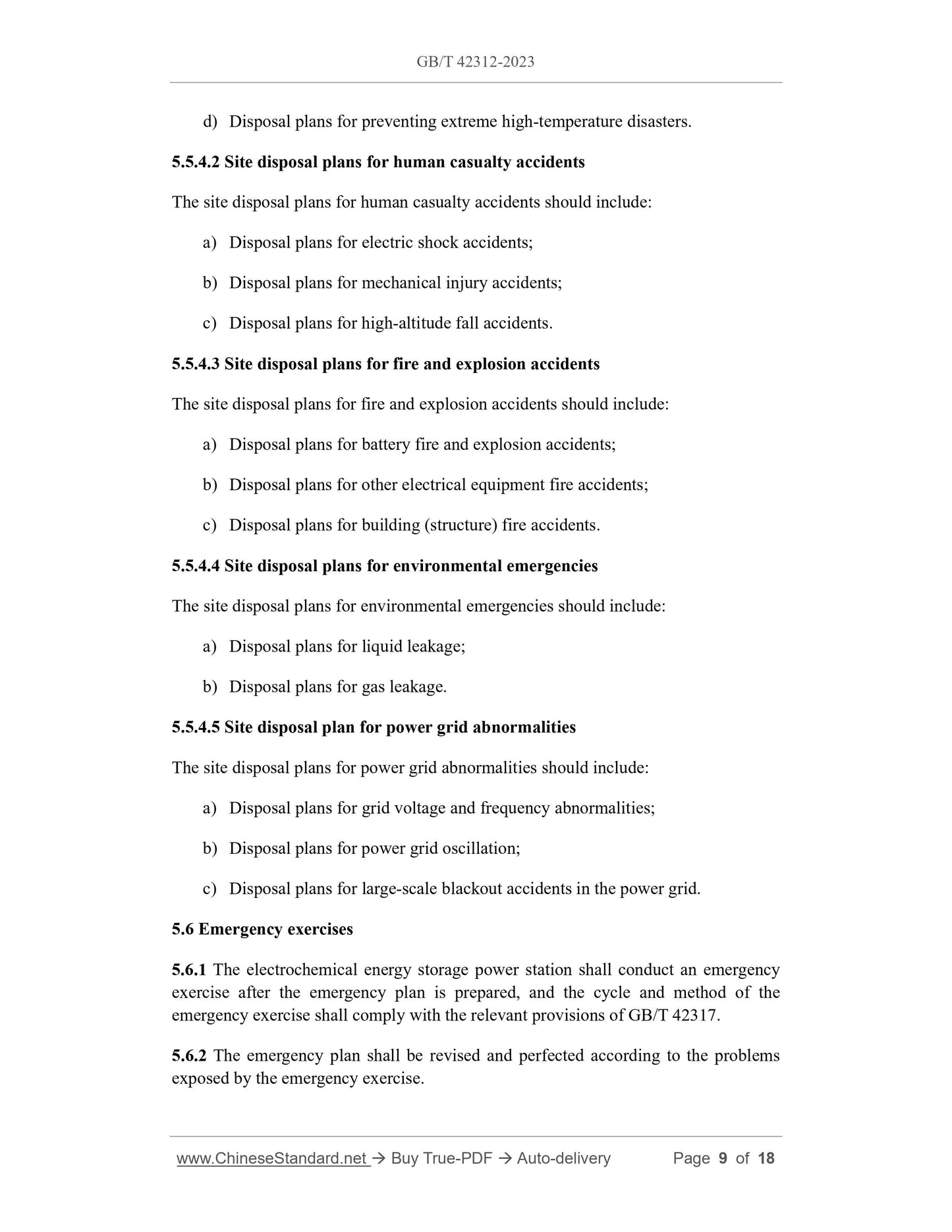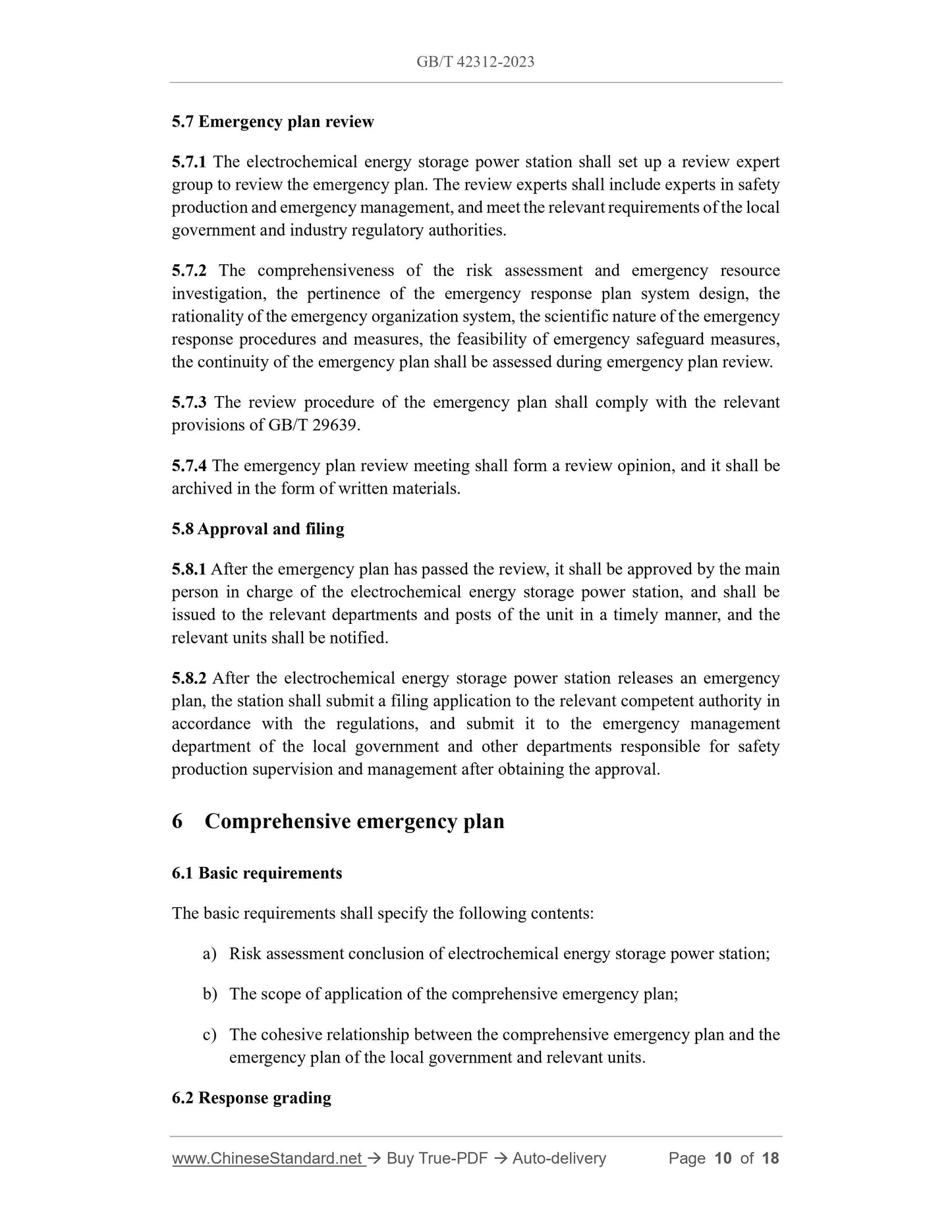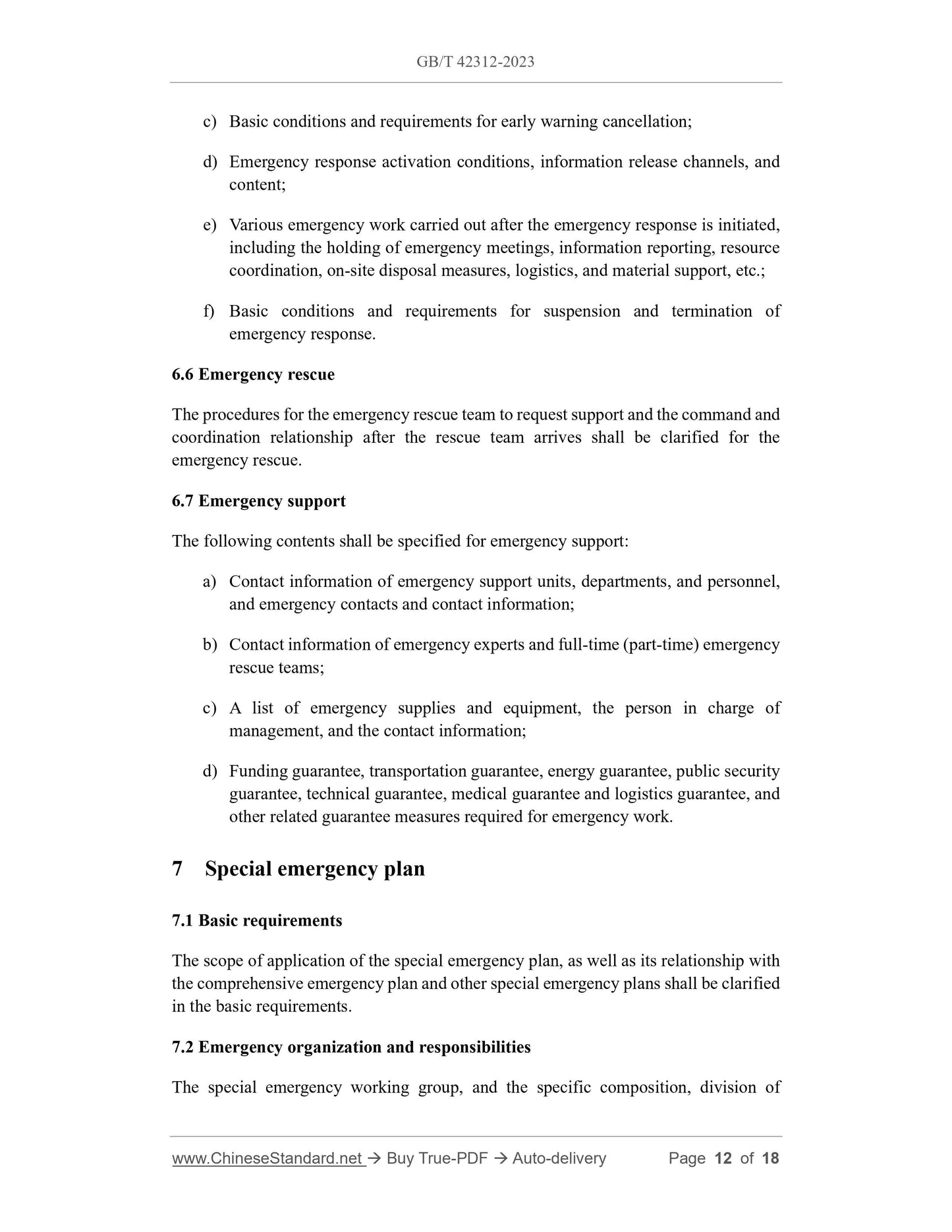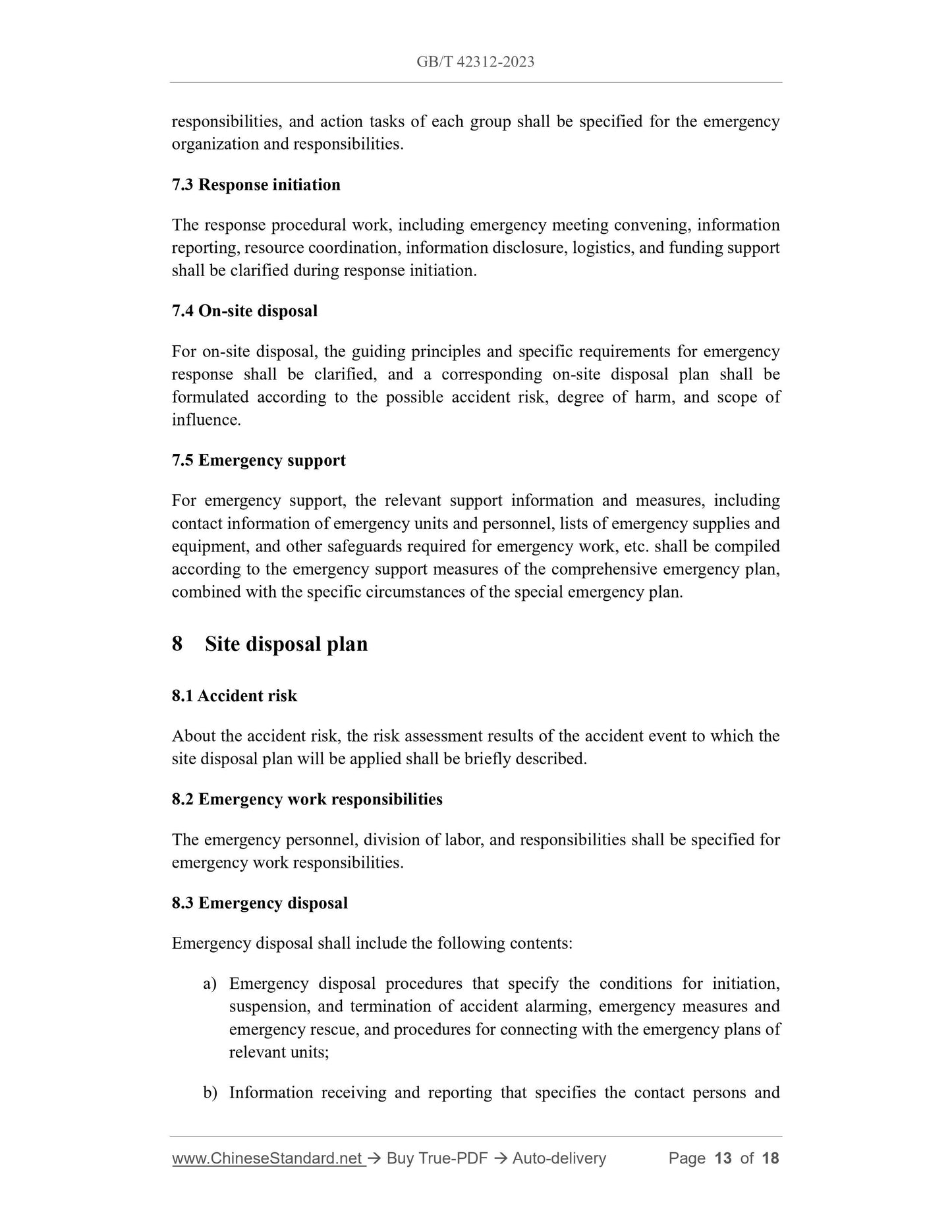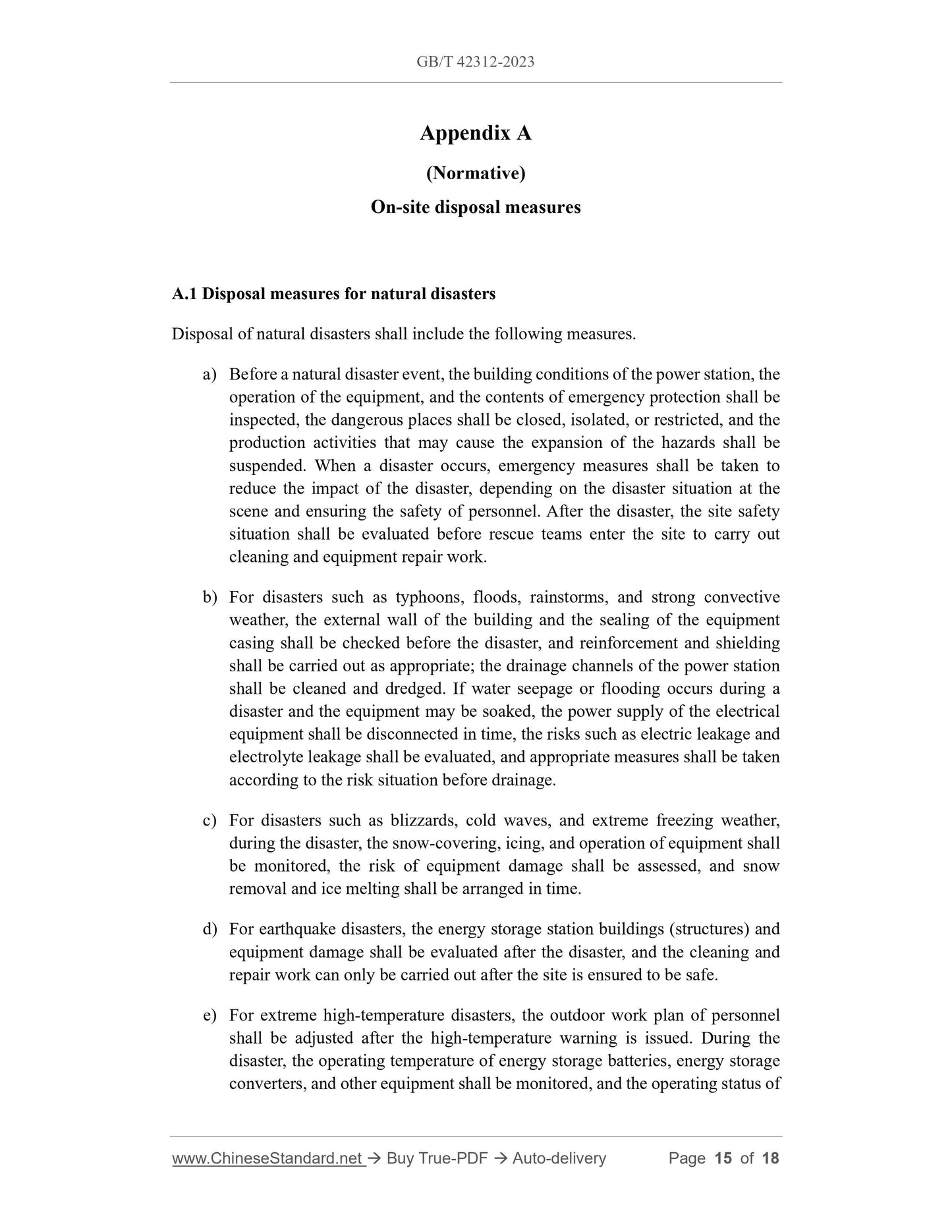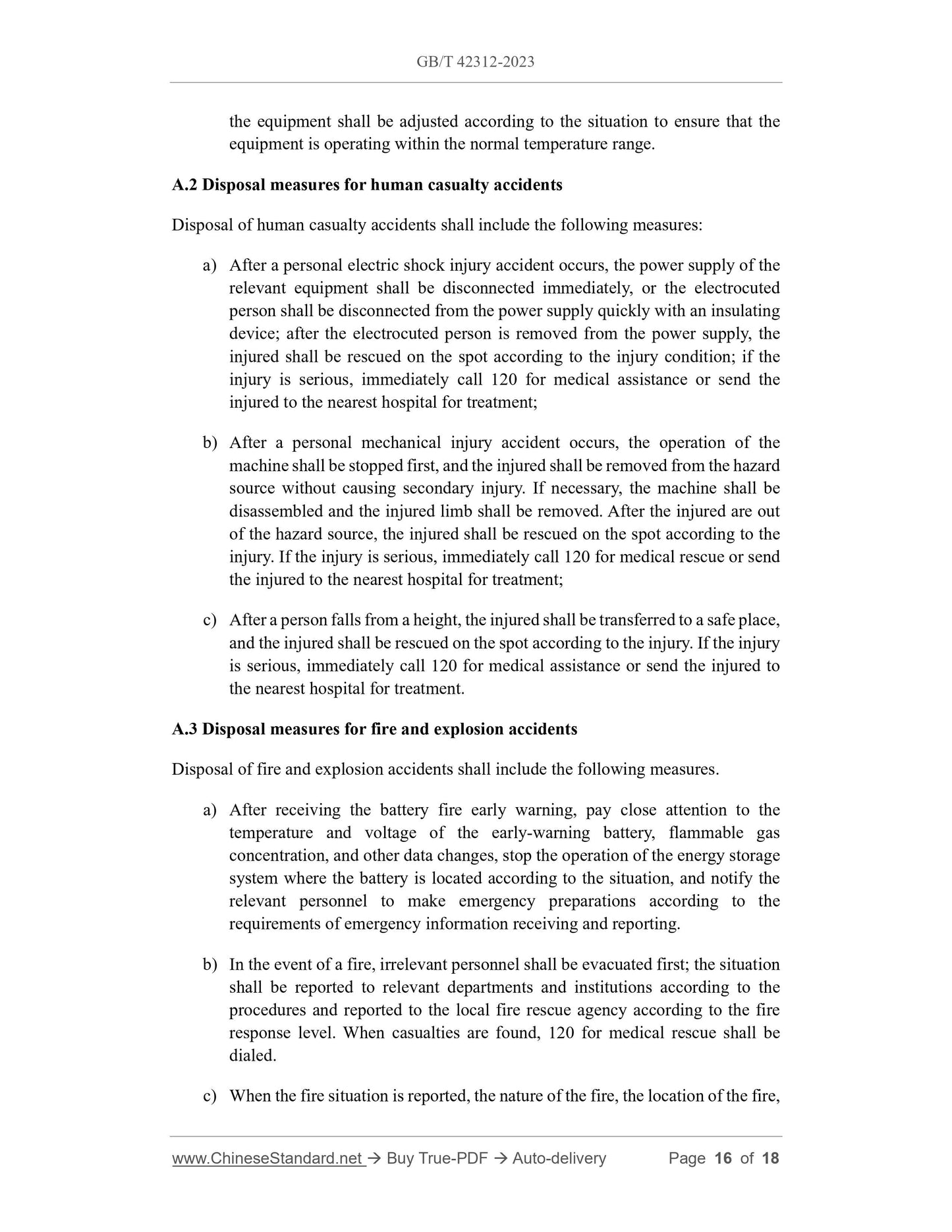1
/
of
11
www.ChineseStandard.us -- Field Test Asia Pte. Ltd.
GB/T 42312-2023 English PDF (GB/T42312-2023)
GB/T 42312-2023 English PDF (GB/T42312-2023)
Regular price
$260.00
Regular price
Sale price
$260.00
Unit price
/
per
Shipping calculated at checkout.
Couldn't load pickup availability
GB/T 42312-2023: Guide for production safety emergency response plan of electrochemical energy storage station
Delivery: 9 seconds. Download (and Email) true-PDF + Invoice.Get Quotation: Click GB/T 42312-2023 (Self-service in 1-minute)
Newer / historical versions: GB/T 42312-2023
Preview True-PDF
Scope
This document establishes the working procedures for the preparation of the productionsafety emergency plan for electrochemical energy storage power stations, and specifies
the main contents of the comprehensive emergency plan, special emergency plan, and
site disposal plan.
This document is applicable to the preparation of production safety emergency plans
for electrochemical energy storage power stations in which lithium-ion batteries, flow
batteries, lead-acid (carbon) batteries, sodium-ion batteries, and water electrolysis-
producing hydrogen/fuel cells are used as energy storage carriers.
Basic Data
| Standard ID | GB/T 42312-2023 (GB/T42312-2023) |
| Description (Translated English) | Guide for production safety emergency response plan of electrochemical energy storage station |
| Sector / Industry | National Standard (Recommended) |
| Classification of Chinese Standard | F19 |
| Classification of International Standard | 27.180 |
| Word Count Estimation | 13,154 |
| Date of Issue | 2023-03-17 |
| Date of Implementation | 2023-10-01 |
| Issuing agency(ies) | State Administration for Market Regulation, China National Standardization Administration |
Share
